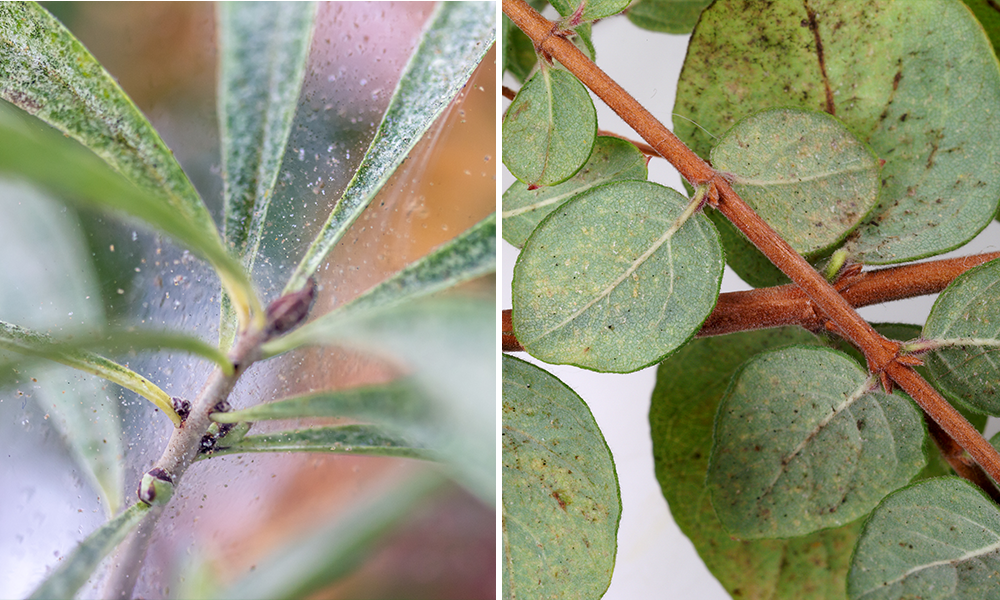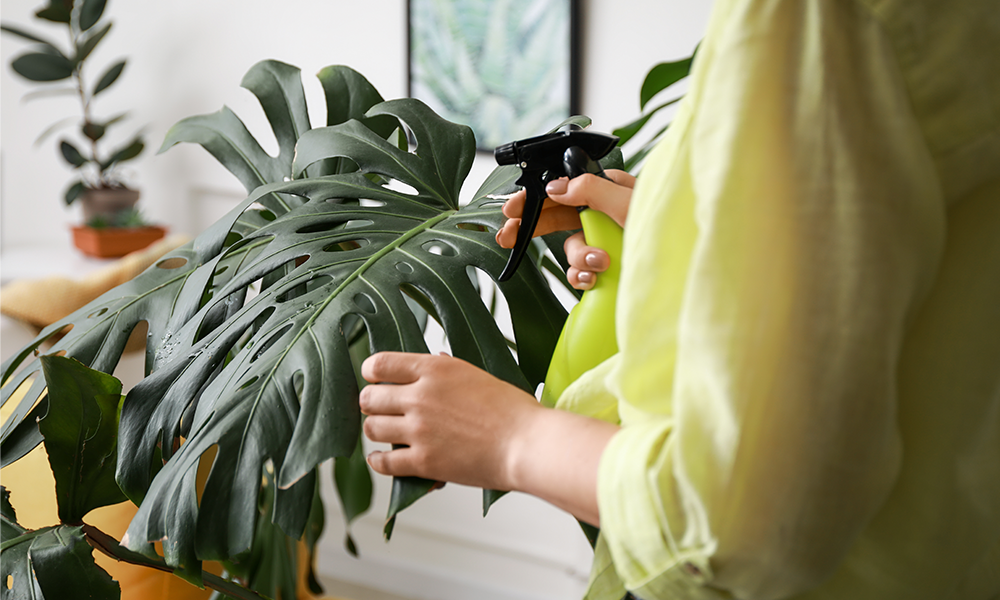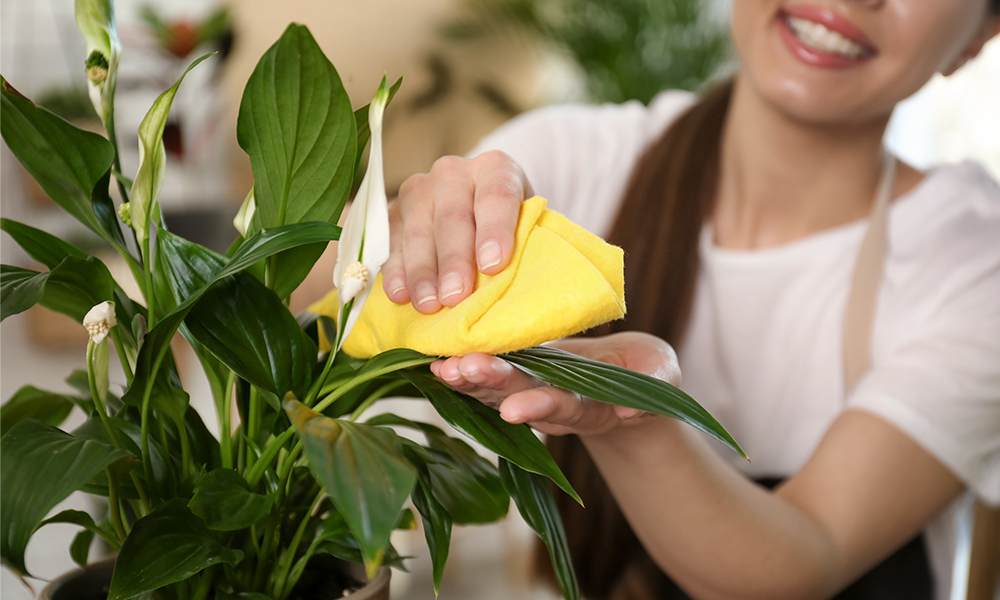Plants bring so much color and life to our homes and gardens, and we work so hard to keep them healthy and beautiful that it kind of feels like somewhat of a personal attack when they aren’t outright flourishing. But sometimes their less-than-lively appearance isn’t due to our lack of loving care, but because they’re the unfortunate target of pests like spider mites. Spider mites are like plant-loving lice—and that’s why we’re sharing how you can evacuate them from your garden and evict them from your home.
What are Spider Mites?
The short answer is that they’re ugly nuisances—but that’s not going to help you spot them very easily! At a whopping 1/50 of an inch long, spider mites are teeny tiny bugs that are very hard to see with the naked eye. They’re so small that they actually spread throughout your garden by riding on gusts of wind, just like pollen. Some are red-brown in color, which is at least slightly noticeable against the green tones of the leaves where they like to colonize, but others are a pale green or yellow—an awfully effective camouflage.
These pests populate pretty easily and can quickly develop into an infestation before you even notice they’re even there. Females produce hundreds of eggs over just a few weeks. Their eggs hatch in only three days, and newly-hatched larvae can mature to adults in just five days. This high turnover means these pests are multiplying virtually every second.

Identifying Spider Mite Damage
Since it’s difficult to spot spider mites until you’ve already got a huge problem on your hands, it’s helpful to know the signs of their damage. These critters like to hang out on the undersides of leaves so that they can pierce the surface to feed on the cells and fluid inside. You’ll first start to notice some areas of discoloration before the entire leaf eventually turns yellow. As the leaves and stems get more and more dehydrated and lose their ability to repair themselves, the leaves will end up curling up and falling off.
Of course, yellowing and leaf curling can happen for many reasons, like other pests or fungal infections. If your “spidey senses” are tingling because you suspect it’s due to spider mites, check under the leaves for their tiny bodies and look for any signs of very thin webbing. As arachnids, they spin webs just like regular-sized spiders to protect themselves and their eggs from harm.
Spider Mite Treatment for Your Houseplants
The good news is that plant mites are actually pretty common household pests, so dealing with them isn’t a foreign concept. Spider mites are especially common at this time of year, as they thrive in the warm, dry environments we create when we turn the heat up. The less-good news is that this allows them to reproduce even quicker, so you have to identify the infestation and act pretty fast. A houseplant that was just fine when you watered it a few days ago could already be infested today.

Defend with Water – Even before you notice the first sign of spider mites, spray the leaves of your houseplants with water. Since they’re attracted to dry leaves, the simplest way to deter and control them is to mist the foliage of your houseplants regularly—especially the undersides, where these bugs like to hang out most. It’s helpful to lay some plastic out before you start so you can catch any insects that fall off in the process. Otherwise, they’ll likely climb right back up there, or they’ll seek out a new plant to terrorize. Make sure you spritz all the nooks, crannies, and corners of the stem where these tiny pests can easily hide. Remember that this isn’t going to control an outright infestation, but it’s a great first line of defense.
Attack with Soap – If you’ve started fighting an infestation with water, but it’s not working, spray your plant with insecticidal soaps. If spraying water doesn’t do the trick, spraying insecticidal soaps might work better. Spray every 3-5 days to keep up with their quick reproductive cycle. If they’re still present after a few weeks, it’s time to move on to the tough stuff.
Triumph with Oil – Neem oil is a horticultural oil and natural insecticide that works to eliminate pests without harming most beneficial insects. Spray it every 3-5 days, making sure you get all areas that could be hoarding bugs or eggs.
Avoid Insecticides! – Use pest-specific insecticides. Usually, the quick and easy answer to getting rid of any pest is to use pesticides. In the case of spider mites, this panic-driven solution will actually do the opposite of what you think it will—since they’re resistant to regular pesticides, you’ll only be killing off all the beneficial insects, making your problem worse than ever. For these nasty bugs, you’ll need to ensure you pick up a pest-specific insecticide.

How to Get Rid of Spider Mites in Your Garden
Dealing with these critters in your garden isn’t as big of a deal since they have many natural predators outdoors. Rain is also a natural preventative since they thrive only in dry conditions and tend to feed exclusively on dry leaves. But if you’re experiencing a period of drought and you start to notice signs of them in your garden, there are a few preventative things you can do to protect your plants.
Similar to controlling these bugs on your houseplants, you can hose your garden down regularly in the absence of rain. Since neem oil is organic, it’s safe to use in your garden—even on vegetable crops. You can also use insecticidal soaps and sprays if necessary, but they may harm other bugs and should never be used on crops.
The benefit of being outdoors is that you also have the option to introduce natural predator insects that will help to alleviate your infestation. (You can do this inside, too, but we don’t know many people who want even more bugs in their home.) Ladybugs are probably the most common option because they’re just so darn cute AND helpful. When you buy them, they’ll likely be packaged and refrigerated so that they’re hibernating—and you can bet your bottom dollar that those ladybugs will be ready for a big breakfast when they come back to life. Other beneficial bugs include predatory thrips, lacewing, and big-eyed bugs.
With any luck, you’ll be back to gorgeous, Instagram-worthy greenery in no time. But keep this in mind: If you’ve tried a few things and you just can’t seem to get rid of spider mites, it’s better to toss the entire plant. The ugly truth is that we can’t save them all, and it’s better to lose one than to have these cringe-worthy critters spread to your other “plant babies.”

